As a driver, one should be aware that the rear wheel bearings are essential to a car’s performance and safety. They enable free rotation of wheels with minimal resistance, hence ensuring a smooth driving experience. Wheel bearings, like any other mechanical parts, wear out and need to be replaced. It is necessary to identify the signs of failing rear wheel bearings early enough because ignoring these warnings can cause dangerous situations on the road and necessitate costly repairs. In this article, we will explore the 10 most common indicators of bad rear wheel bearings that will help you know what to consider in order to keep your vehicle running efficiently while being safe at all times by performing routine check-ups.
What are the most common signs of a failing rear wheel bearing?
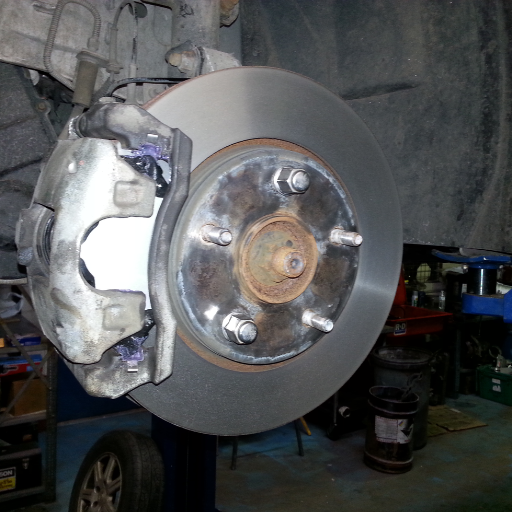
Grinding, humming, or growling noises are some signs that your rear wheel bearings have failed. You may also observe uneven tire wear, vibrations in the steering wheel or car body, and a decline in overall vehicle handling or stability. Also, as the condition of the bearing worsens, ABS warning lights may light up. If not checked, a faulty bearing can cause wheel seizure or even lead to wheel detachment which is a grave safety issue. Recognizing these symptoms early and dealing with them quickly is crucial for preventing more serious mechanical problems and maintaining safe driving conditions.
Unusual noises: Humming, growling, or grinding sounds
strange sounds such as humming, growling, or grinding would often mean that a wheel bearing is faulty. Humming noises are suggestive of irregular tread wear or a damaged bearing, while growling indicates more advanced wear or contamination within the bearing. Grinding, on the other hand, signifies severe damage that must be rectified with utmost urgency since it could result in dangerous conditions. These sounds differ in intensity or tone when making turns or moving forward and backward, thus indicating where the problem lies. It is, therefore, necessary to identify and solve these issues early enough for better vehicle performance and safety reasons.
Vibrations felt through the steering wheel or floorboard
steering wheel or floorboard vibrations are often symptoms of underlying mechanical problems. Let’s take apart the reasons slowly:
- Unbalanced or Damaged Tires: When your tires are unbalanced or have uneven wear, they can cause vibrations that you can notice. This usually happens at some given speeds and the condition may worsen over time if not looked into.
- Worn Wheel Bearings: In case of faulty or damaged bearings, it can create a cyclical feeling like your car dances on the steering more especially when making turns. This is very dangerous as it could compromise the safety of the vehicle.
- Brake System Issues: Warped brake rotors will result in pulsations felt on the steering wheel,l, especially when braking. This situation arises from roughness, hence non-uniform friction during engagement with brake pads.
- Suspension or Steering Components: Bearings such as control arm, tie rod ends or bushings get worn out leading to vibrations primarily under load/turns. These should be checked during periodic maintenance due to their contribution to stability of a vehicle.
- Driveshaft or Axle Problems: Driveshafts that are bent, imbalanced, or have CV joint problems cause transmission of floorboard shaking. Typically, this sensation is more pronounced at high velocities hence early checkup is recommended.
To identify and solve these vibrations, one must look at each of them systematically. Start by examining the wheels before moving on to the other components of the suspension, brakes and drivetrain to find out what is causing it. This will not only help get rid of discomfort that comes with vibrations but also ensures that your car operates safely and effectively.
How does a bad rear wheel bearing affect vehicle performance?
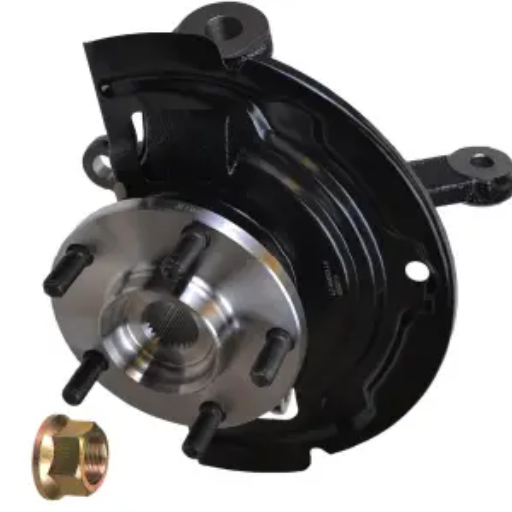
If you hear a hum, rumble, or grinding sound coming from your car when cornering, especially at higher speeds, your rear wheel bearing may have gone bad. Bad rear wheel bearings are very noisy, and this noise can manifest in various forms, such as humming, grinding, or rumbling sounds. Besides making the ride noisier, it also increases friction, which decreases fuel economy and results in irregular tire wear. In addition, if rear wheel bearings go bad, poor handling and stability that could be dangerous in emergencies will result. So safety as well as performance has to be maintained by urgent addressing of this issue.
Impact on steering and handling
The steering and handling of a vehicle can be greatly reduced when there is a wheel bearing that has failed on the rear. Increased vibrations in the steering wheel or pulling, especially during cornering, may be observed. These are not just uncomfortable to drive with but also dangerous, as they may lead to accidents, especially when it comes to emergency maneuvers. Precise control and safety of the entire car depend on good condition of its rear wheel bearing.
Decreased fuel efficiency due to increased friction
As a rear wheel bearing begins to malfunction, it induces more friction between the wheel assembly and the axle. Consequently, the engine has to use more energy just to maintain a constant level of performance under this additional resistance meaning that fuel is consumed faster. To help illustrate this knowledge, let’s go through these basic parameters that may result in reduced fuel efficiency as a consequence of having bad or already worn-out back wheel bearings:
- Friction Levels: If a wheel bearing is healthy, then the friction will be lower thereby enabling an easy rotation of the wheel. Conversely, with damage on the bearing or it being worn out there is higher friction hence slower motion of the wheel necessitating more power and engine fuel.
- Rolling Resistance: When bearings are faulty. This means that there is increased rolling resistance in their movement. The percentage of energy used by a vehicle to move can also be calculated based on resistance and strain on the engine.
- Heat Generation: Friction levels that are high will also result in excessive heat which occurs in the wheel assembly. Over time, this results in energy losses that further reduce fuel efficiency.
- Imbalance and Vehicle Drag: Uneven rotation of wheels or misalignment may happen due to damaged bearings, thereby increasing drag towards a car; this makes its aerodynamics unproductive, forcing an engine to burn extra fuel to maintain required speeds.
In order to restore smooth wheel rotation, minimize friction, and increase fuel efficiency; it is very important to address these elements and replace rear wheel bearings on time. In order to avoid future damages that would lead to higher fuel consumption, regular maintenance and inspections are fundamental.
Potential damage to other components
When the wheel bearings at the rear fail, it does not only affect them. Sometimes in cases of prolonged negligence, there could be a problem with the wheel hub assembly as well. Due to excessive friction causing heat that can warp or damage neighboring parts, this might occur. Moreover, this will also put more strain on the suspension system as well as on the axle which may lead to expensive repairs. In my experience, attending to bad bearing in time saves one from spending much money and also ends up with other breakages, therefore compromising the safety and reliability of their vehicles.
At what speed do bad rear wheel bearing symptoms typically become noticeable?
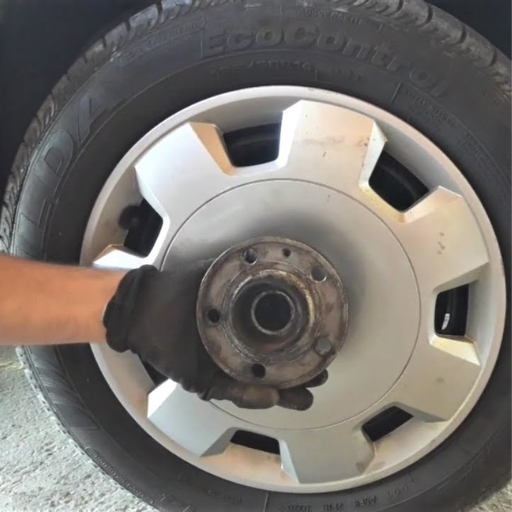
Typically, bad rear wheel bearing symptoms become obvious when driving at speeds of about 30-50 mph (48-80 km/h). However, the exact speed range varies depending on how worn out they are as well as vehicle types. The following is a breakdown of what happens at different parameters and why these symptoms may be more pronounced within this range:
- Noise Levels – Bad bearing sounds may vary from quiet or unsteady humming, grinding, or clicking when driving at low speeds up to 30 mph. If the wheel rotates faster, typically between 30 and 50 mph, these noises are amplified, and vibrations become more apparent because of a damaged bearing.
- Vibration Intensity – What’s more, a faulty bearing causes an irregular turning motion of the wheel that results in vibration. These vibrations worsen as speed increases due to the greater force exerted on the bearing and other connected parts.
- Steering and Handling Sensitivity – At speeds above 30 mph, there could be increased signs like trembling steering wheels or drifting in one direction. This is due to an unevenly moving bear that disturbs wheel alignment and smoothness.
- Wind and Road Noise Masking –Sometimes while driving at very high speeds (above 50mph), road noise, wind resistance or other vehicle dynamics may hide the symptoms of a bad rear wheel bearing hence early diagnosis is desired at moderate speed range.
Faulty bearings can be identified with the help of these parameters. You can save yourself time and money on expensive repairs by continually checking for vibrations, strange sounds or issues when handling. Whenever you suspect a problem, it is always wise to have an expert check it out.
Low-speed symptoms: Grinding or rumbling noises
If you hear grinding or rumbling sounds when your car is moving, and they tend to decrease with speed, it is a sign of serious wear or damage on the rear wheel bearing. This noise is caused by un-smooth turning or damaged bearing parts that result in friction and hence sound. You should never neglect this type of problem as using it further can only cause a great impact on other surrounding parts, which may endanger your safety while driving. A prompt checkup and replacing the bearing are necessary in order to avoid more damage and for better performance.
High-speed symptoms: Humming or whining sounds
high-speed humming or whining sounds are often caused by rear wheel bearing problems. These noises get louder as the vehicle speeds up, indicating that the bearing is wearing off. My advice is to deal with this promptly because driving under these conditions for a long time can lead to overheating and more friction,n which can be risky. Timely response not only protects the car’s performance but also secures the lives of the driver and passengers as well.
Can you drive with a bad rear wheel bearing, and for how long?

One thing I really advise against is driving with a bad rear wheel bearing. Even if you manage to drive for a short distance, the dangers associated with such an act are far much bigger than the gains. An ineffective wheel bearing may also make your vehicle behave in an unpredictable manner, increase wear and tear on other components, and eventually lead to seizure or detachment of the wheel while in motion. If you realize these warning signs like abnormal sounds or vibrations it is highly important that there be immediate attention given to this issue. Procrastination in fixing it not only compromises your car’s safety but can also result in further, more extensive, and expensive damage.
Risks of continued driving with a faulty bearing
I must say that it is not a good idea to drive with a damaged wheel bearing. I have witnessed such minor issues change into very serious conditions over the years of my professional life. Wheel bearings may cause your vehicle to be unstable, reduce braking efficiency, and compromise control besides making noise or vibrating. In severe cases where this happens, then it might lead to complete wheel failure,e which is not only expensive but can also cost lives. To save yourself the trouble, take it for inspection if you believe something is wrong. It’s just one small step to prevent big troubles later on.
Estimated safe driving distance before replacement
the estimated safe driving distance up to when a failing wheel bearing needs a replacement can vary widely depending on how severe the problem is and driving conditions. Ordinarily, if you start experiencing early indications such as odd sounds or tremors then expect that between 100 to 1,000 miles might still be left for it to become worse. Nevertheless, I also discourage this move. The symptoms set in; take action immediately before anything else. Delaying until later would mean a sudden breakdown, which is dangerous and costly in terms of repair. I’ve learned that there are many factors to consider when determining whether or not to continue driving a vehicle with bad wheel bearings.
How can you differentiate between front and rear wheel bearing problems?
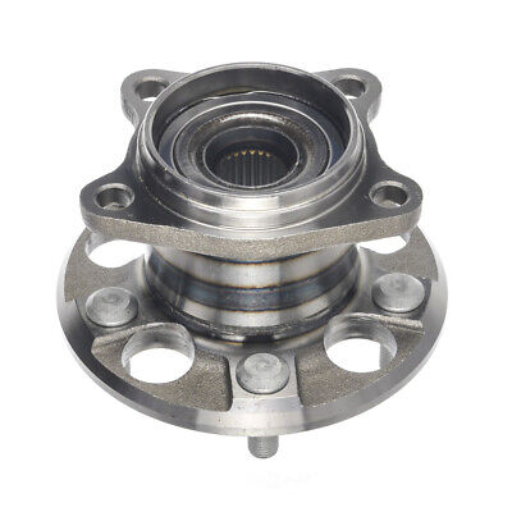
The question of whether the problem is in front or rear wheel bearings can usually be answered by identifying the source of the noise or vibration. When a front wheel bearing becomes faulty, it creates sounds that get louder as you turn, and these sounds tend to alter themselves depending on the direction where you are turning. On the other hand, for rear wheel bearings, there is more consistency in terms of their noise patterns, even though this might not change too much when they make turns. Moreover, front wheel bearings are often associated with vibrations noticed through the steering wheel, while vibrations coming from behind indicate problems with rear wheel bearings. A thorough examination by an expert is essential for accurate diagnosis.
Locating the source of the noise or vibration
I always advise a systematic approach to locating noise or vibrations in your vehicle. This is a simple way I usually go about it:
- Pay Attention to the Sound
The type of noise may indicate which direction to take when diagnosing. For instance, a humming or grinding sound that gets louder while turning and depends on the direction of the turn usually comes from a faulty front wheel bearing. A high-pitched noise when turning left may mean that the right bearing is failing, whereas if it occurs while turning right, there may be an issue with the left one. However, for rear wheel bearings, this sound always remains steady irrespective of the turn.
- Notice the Steering Wheel Vibration
Vibrations also help reveal what could be wrong. In most cases, vibrations through the steering wheel are caused by problems with your front wheel bearings. Conversely, vibrations from behind can point to malfunctioning rear wheel bearings. These subtle hints are important and could help you find out where exactly an expert should concentrate without even carrying out a professional checkup.
- Inspect the Vehicle’s Speed Sensitivity
Moreover, observe if the noise or vibration alters as you speed up. Mostly, for instance, wheel bearing problems are speed-sensitive; hence, they become louder when you increase speed and mute at reduced speeds: it is an important parameter that confirms whether bearing has failed or not.
- Seek Professional Diagnosis
However, with these observations, it is always advisable to have an expert examine the car just to be sure. To guarantee that a correct diagnosis is made, a mechanic who has been trained can lift the vehicle up safely and manually test the bearings for resistance or play.
Combining observant attention and professional knowledge is the most effective way to find where noise or vibrations emanate from in most automobiles if you follow these steps and concentrate on these factors.
Specific symptoms unique to rear wheel bearings
When it comes to the failing rear wheel bearing, my experience has taught me that they come with a distinct set of symptoms when compared to their front counterparts. It is important to look out for one sign in particular, which is a low humming or droning noise heard during acceleration or turning. In some respects, back wheel issues can feel more subtle than those at the front, transmitting vibrations across the car’s frame rather than through the steering wheel itself. Another common symptom of this kind of problem is uneven or excessive wear on tires, which may be caused by misalignment due to bearing damage. Also, I found out that drivers may notice feelings of instability or swaying while driving at higher speeds. Although they might appear minor initially, these signs can become worse if not acted upon immediately, therefore increasing the severity of handling and safety problems in the future.
What causes rear wheel bearings to go bad prematurely?
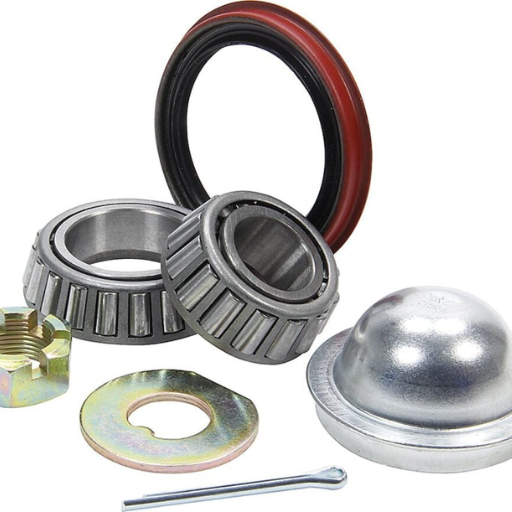
Poor maintenance, contamination, and inadequate lubrication could be the major causes of premature failure of rear wheel bearings. On top of that, external factors like water, dirt, or debris penetration can erode the protective seal, leading to internal damage. Also, incorrect fitting or high torque at mounting may strain bearings, thus making them wear out quickly. Likewise, a rugged driving environment, such as consistently encountering potholes or rough surfaces, increases wear and tear. Timely check-ups and proper use of oils are crucial in maintaining the performance level and long life span of rear wheel bearings.
Impact of driving conditions and vehicle load
I can confidently state that rear wheel bearings’ welfare is significantly influenced by driving conditions and vehicle load. Driving continually on roads that are rough or uneven increases stress on these parts which leads to quicker wearing-out of them. Similarly, when vehicles are overloaded, a lot of pressure is exerted on the bearings because they carry more weight than they were intended to. They become weak over time due to such repeated stresses, making them not to serve for long. Proper distribution of load and avoiding harsh road surfaces whenever feasible can significantly contribute towards the health of your wheel bearings in the long run.
Manufacturing defects and poor maintenance
I have personally observed that manufacturing faults can badly damage rear wheel bearings. Even slight defects in materials or the manufacturing process, such as rough surfaces or insufficient curing, may result in weak bearings that fail prematurely. Conversely, inadequate maintenance is also a significant cause of this problem. An individual’s negligence to check on wheel bearings frequently, not adhering to lubrication periods and permitting dust and water into the bearing assembly can cut down its life by a great margin. I always suggest regular checks and quality audits so that emerging problems can be dealt with before they become serious and this will help me identify any potential issues for good performance purposes.
How much does it cost to replace a bad rear wheel bearing?
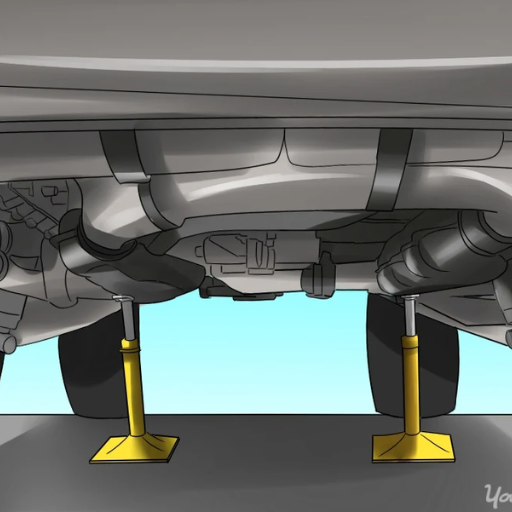
The price of replacing a damaged rear wheel bearing can differ widely depending on the vehicle make, type as well as labor fees within your area. Based on my experience, the total expenditure varies between $150 and $500 per wheel. The cost of parts is normally in the range of between $50 and $200 while labor costs range from about $100 to $300 because of the manual skill required for this work. I generally advise people to get good-quality bearings and have them installed by professionals to ensure durability and safety. If you note that your wheel bearing is bad, it’s important to fix it before it gets worse so that you can reduce future damages, which might be expensive when repairing it was delayed.
DIY vs. professional mechanic replacement costs
Choosing between fixing your car on your own and hiring a mechanic to do the job is highly dependent on skills and access to tools. From what I have witnessed many times, these DYI buffs would go out of their way to purchase components themselves for as little as 50$-200$. Consequently, it will cost them some time but no more than that. However, replacing a wheel bearing isn’t easy; equipped with specialized instruments such as a bearing press or puller, it can be very hard. On the other hand, going with an expert mechanic means paying labor charges amounting to approximately $100-$300, but it guarantees correct and safe handling of the problem. Hence, I feel like most times, it makes more sense to trust someone trained instead of doing the repair yourself unless you are confident in your abilities for peace of mind and dependability in a long-term perspective.
Factors affecting the price of wheel bearing replacement
Wheel bearing replacement can have different prices depending on some key aspects I know. Comfortably, the kind of vehicle is one of the crucial factors here—luxury and sports cars may demand pricier bearings because they are designed with special materials. Additionally, where the wheel bearing is situated matters whereby replacing front-wheel bearings is much easier in comparison to rear-wheel ones especially in case they are integrated into hub assemblies. Furthermore, availability and quality of spare parts also count since OEM (original equipment manufacturer) components are more expensive while ensuring compatibility as well whereas aftermarket options can have various price and value ranges too. Lastly, labor costs fluctuate due to different job complexity levels and local labor charges. These points determine a price range; however, it is always wise to consider quality and expertise for long term purposes.
Reference
- Sun Devil Auto: Rear Wheel Bearings – This source provides insights into the effects of failed wheel bearings, including vibrations and a shaky ride.
- Kelley Blue Book: Wheel Bearing Replacement Signs – This article lists various symptoms indicating the need for wheel bearing replacement, such as humming noises and wheel wobble.
- Quora: Rear Wheel Bearings Replacement – A community-driven platform where users discuss common signs of wheel bearing failure, like humming or rough wheel noise.
Frequently Asked Questions (FAQs)
Q: What are the most common symptoms of bad rear wheel bearings?
A: The most common symptoms of bad rear wheel bearings include unusual noises such as grinding, rumbling, or humming, especially when the vehicle is in motion. Other signs include uneven tire wear, vibrations felt through the steering wheel or floorboard, and the vehicle pulling to one side while driving. Additionally, you may notice decreased fuel efficiency, ABS system malfunctions, or a wobbly feeling when driving at higher speeds.
Q: How do I know if my rear wheel bearings are bad?
A: To determine if your rear wheel bearings are bad, listen for unusual noises coming from the rear of the vehicle, particularly when turning or accelerating. You can also jack up the rear of the car and try to move the tire back and forth. If there’s excessive play or movement, it might be a sign that the bearings are worn. Additionally, a professional mechanic can perform a thorough inspection to confirm if the rear wheel bearings are bad and need replacement.
Q: What type of noise does a bad wheel bearing make?
A: A bad wheel bearing can produce various types of noise, including a grinding or grating sound, a humming or rumbling noise that changes with vehicle speed, or a cyclic chirping, squealing, or squeaking. The bearing noise often becomes louder or more pronounced when turning or when there are higher loads on the wheel, such as during acceleration or deceleration.
Q: How long can you drive with a bad rear wheel bearing?
A: While it’s possible to drive for thousands of miles with a slightly worn wheel bearing, it’s not recommended to continue driving once you’ve identified that the bearings are bad. Ignoring the problem can lead to more severe damage, potentially causing the wheel to seize or even separate from the vehicle. It’s best to have the rear wheel bearings replaced as soon as possible after noticing symptoms to ensure safety and prevent more costly repairs.
Q: When is it time to replace the rear wheel bearings?
A: It’s time to replace rear wheel bearings when you notice any of the telltale symptoms, such as unusual noises, vibrations, or uneven tire wear. Regular inspections during routine maintenance can also help identify when bearings are starting to wear. Generally, wheel bearings can last 100,000 miles or more, but factors like driving conditions, vehicle load, and quality of the bearings can affect their lifespan. If you’re unsure, it’s best to consult with a professional mechanic to determine if it’s time for a replacement.
Q: Can bad rear wheel bearings affect braking performance?
A: Yes, bad rear wheel bearings can affect braking performance. As the bearings wear, they can cause increased play in the wheel assembly, which may lead to inconsistent contact between the brake pads or rear brake shoes and the rotor or drum. This can result in reduced braking efficiency, longer stopping distances, and potential damage to other brake components. In severe cases, it may also trigger ABS warnings or cause the system to malfunction.
Q: How do tapered roller bearings differ from other types of wheel bearings?
A: Tapered roller bearings are designed to handle both radial and axial loads, making them suitable for use in wheel hubs. They consist of tapered rollers arranged between inner and outer races, allowing them to distribute the load over a larger surface area. This design makes them more durable and capable of handling higher loads compared to ball bearings. Tapered roller bearings are commonly used in rear wheel assemblies, especially in trucks and larger vehicles, due to their ability to withstand the higher loads and stresses experienced by the rear axle.
Q: Can driving on the freeway exacerbate symptoms of bad rear wheel bearings?
A: Yes, driving on the freeway can often exacerbate symptoms of bad rear wheel bearings. At higher speeds, the increased stress on the bearings can make noise more noticeable and vibrations more pronounced. You might experience a humming or rumbling noise that changes pitch or intensity as you accelerate or decelerate. However, in some cases, the noise might actually become less noticeable at very high speeds due to the constant load. If you suspect your rear bearings are bad, it’s important to have them checked, regardless of whether the symptoms are more or less noticeable on the freeway.
